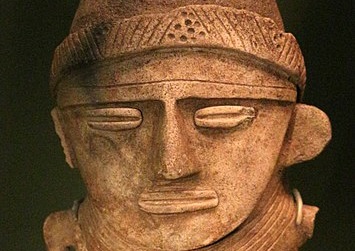
Deep within the history of Colombia lies the fascinating civilization of the Muiscas. Flourishing long before the arrival of the Spanish conquistadors, the Muiscas left an indelible mark on the country’s cultural heritage. With their advanced agricultural practices, complex social structure, and rich mythology, the Muiscas played a significant role in shaping the region that is now known as Colombia.
The Muiscas inhabited the highlands of present-day Colombia, primarily in the areas surrounding the Bogotá plateau, the Cundinamarca region, and the eastern slopes of the Eastern Cordillera of the Andes. Their territory encompassed fertile valleys, lush mountains, and vast expanses of fertile land, allowing them to thrive and develop a sophisticated society.
Social Structure and Governance
The Muiscas had a hierarchical social structure headed by a chief or cacique. The cacique held political, religious, and military authority and was considered the supreme leader of the Muisca people. Below the cacique were the nobles, warriors, priests, and skilled artisans who played crucial roles in the society. The majority of the population consisted of farmers and laborers.
Agriculture formed the backbone of the Muisca civilization. They cultivated crops such as maize, potatoes, beans, quinoa, and various fruits and vegetables. The Muiscas were known for their intricate irrigation systems and terraced fields, which allowed them to maximize crop production in the mountainous terrain. Their advanced agricultural techniques ensured food security and a surplus that contributed to their societal growth.
The Muiscas had a well-developed trading network. They traded with neighboring indigenous groups, exchanging goods such as salt, cotton textiles, ceramics, and gold. Gold held great significance in their culture, not only as a form of currency but also for its religious and ceremonial value. El Dorado, the legendary city of gold, was associated with the Muisca people and their rituals of offering gold to the gods in sacred lakes.
Religion and Mythology
The Muiscas had a complex belief system centered around nature and the spiritual world. They worshipped a pantheon of gods and spirits, with Chiminigagua, the creator god, occupying a central role. The Muiscas believed in the existence of an afterlife and practiced elaborate funerary rites. Their mythology included stories of creation, heroes, and the origin of important landmarks in their territory.

Spanish Conquest and Legacy
The arrival of the Spanish conquistadors in the 16th century marked a dark period for the Muiscas. They were subjected to colonization, forced labor, and the destruction of their cultural practices and sacred sites. Despite these hardships, elements of Muisca culture have managed to survive. Today, the descendants of the Muiscas strive to preserve their heritage, language, and traditions, contributing to the diverse tapestry of Colombian society.
The Muiscas represent an integral part of Colombia’s history, serving as a testament to the indigenous peoples who inhabited the land long before the arrival of European settlers. By understanding and appreciating the legacy of the Muiscas, we can gain a deeper appreciation for the diverse and vibrant tapestry of Colombian culture.
See all the latest news from Colombia and the world at ColombiaOne.com. Contact our newsroom to report an update or send your story, photos and videos. Follow Colombia One on Google News, Facebook, Instagram, and subscribe here to our newsletter.

